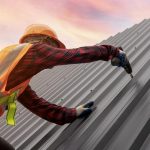Introduction
Shrubs and trees on your property aren’t just plants, but living investments. They help make your property look good, increase curb appeal, and also help to maintain a high property value. You can search for “tree service near me” and hire professionals to get the greenery in your yard trimmed, pruned, and maintained. However, you also need to provide them with the right nutrients so that they can grow healthy and strong. Let’s check out a few fertilization tips for that.
Tips & Tricks
- Types of fertilizers – All fertilizers aren’t the same and different plants have strict requirements for different types of fertilizers. Fertilizers contain three main ingredients – phosphorus, nitrogen, and potassium. Other nutrients that are present in fairly large quantities include sulfur, calcium, and magnesium. You’ll often see fertilizers with three numbers for the ratio of nitrogen, phosphorus, and potassium.
Apart from the N-P-P ratio, you also have to look out for slow and fast-release fertilizers. Fast-release fertilizers are soluble in water and cheap. On the other hand, slow-release fertilizers release nitrogen over a long period of time. Unlike fast-release fertilizers, slow-release fertilizers don’t leach or run off out of the soil very quickly.
If you have compacted soil, angled terrain, or a ground where run-off is typically high, then a slow-release fertilizer is always recommended for your shrubs and trees. Slow-release fertilizers are also favored in general since there is a lower risk of “burning” or fertilizer damage to the plant.
Natural fertilizers like cow manure, composted sewage sludge, and other such variants are also preferred over synthetic fertilizers since they contain micronutrients like iron and zinc. They are also better at improving the soil structure. However, unlike synthetic fertilizers, natural fertilizers have a lower nutrient concentration of potassium, nitrogen, and phosphorus.
If you want to stick to natural fertilizers, you must use a generous amount to compensate for lower nutrient density. You should also be very selective while buying synthetic fertilizers. Apart from looking out for the N-P-P ratio and slow or fast release, you should also watch out for fertilizers formulated to be used on lawns. Don’t use them on your trees and shrubs since they might get damaged.
- Amount of fertilizer – The amount of fertilizer that you apply to your plants and trees depends mainly on the fertilizer’s nitrogen content. Trees and shrubs can get as much as 2 to 4 pounds of nitrogen for every 1000 square feet of root spread every year. To figure out the root spread, look at the crown of your tree. Root spread usually constitutes around 1.5 times the area covered by the crown. When you’ve planted new trees and shrubs, you need to provide them with more nitrogen during the initial growth phase.
When you buy a fertilizer, the label would have instructions about the recommended rates and you should stick to that. Things can be a bit tricky when you have trees and shrubs on the lawn along with the grass. If the fertilizer has more than 2 pounds of nitrogen it may burn out the grass. On the other hand, your trees and shrubs may suffer from nitrogen deficiency if they don’t get enough of it.
That’s why you need to be cautious while fertilizing plants and trees on your lawn. Check for signs of nitrogen deficiency. Look out for reddish or purplish streams and veins or yellowing leaves. If nitrogen deficiency is apparent, apply slow-release fertilizers with a gap of at least a few months. Make sure that the total nitrogen concentration in a year doesn’t exceed the amount recommended for your lawn grass.
When people eat too much, they can develop a lot of disorders including obesity, diabetes, and other conditions. The same holds for plants. Excessive fertilizer can harm your trees and shrubs and can also harm the environment. It can make your trees and shrubs more susceptible to drought, cold, and pest infestation. The amount of fertilizer that’s not absorbed by plants can runoff into surface water and pollute the groundwater.
- Application method and timing – Fertilizers can be applied via both direct and indirect methods. Either way, the fertilizer needs to be applied to the entire root zone. In indirect fertilization, trees and shrubs growing on the lawn are indirectly fertilized when you fertilize the lawn grass. On the other hand, with direct fertilization, you apply the fertilizers directly to the root zone of trees and shrubs.
You need to be careful with fertilizers and make sure not to put any fertilizer granules on the plant leaves. Some plants like azaleas and liriope are sensitive and may get injured when their leaves absorb nutrients from the granules. Moreover, it’s important to irrigate the ground right after fertilization. Without it, some nitrogen may be evaporated and lost to the environment. That holds true even when you’re indirectly applying fertilizers to the lawn.
Timing is key while applying fertilizers. You need to make sure that your plants actually need the fertilizers and are ready to absorb them after the application. A successful fertilizer application coincides with the right level of soil moisture and a crucial period of root growth. The spring season is usually the best time for fertilizing trees and shrubs. During the early summer, you can do a light application if the conditions call for it.
If trees and shrubs are stressed by drought and other such conditions during the summer season, they shouldn’t be fertilized. When there’s a drought and the ground has little to no water, roots have a very difficult time absorbing those nutrients. So, you’ll be wasting your money and polluting the environment at best.
Conclusion
Homeowners often consider fertilizers as medicines for diseased plants. Instead, you should treat fertilizers as they are, high-quality plant food. Applying fertilizers at the right time and in the right way can keep your trees and shrubs strong and full of vigor. You can search for “tree service near me” and hire pros to get your trees serviced.










